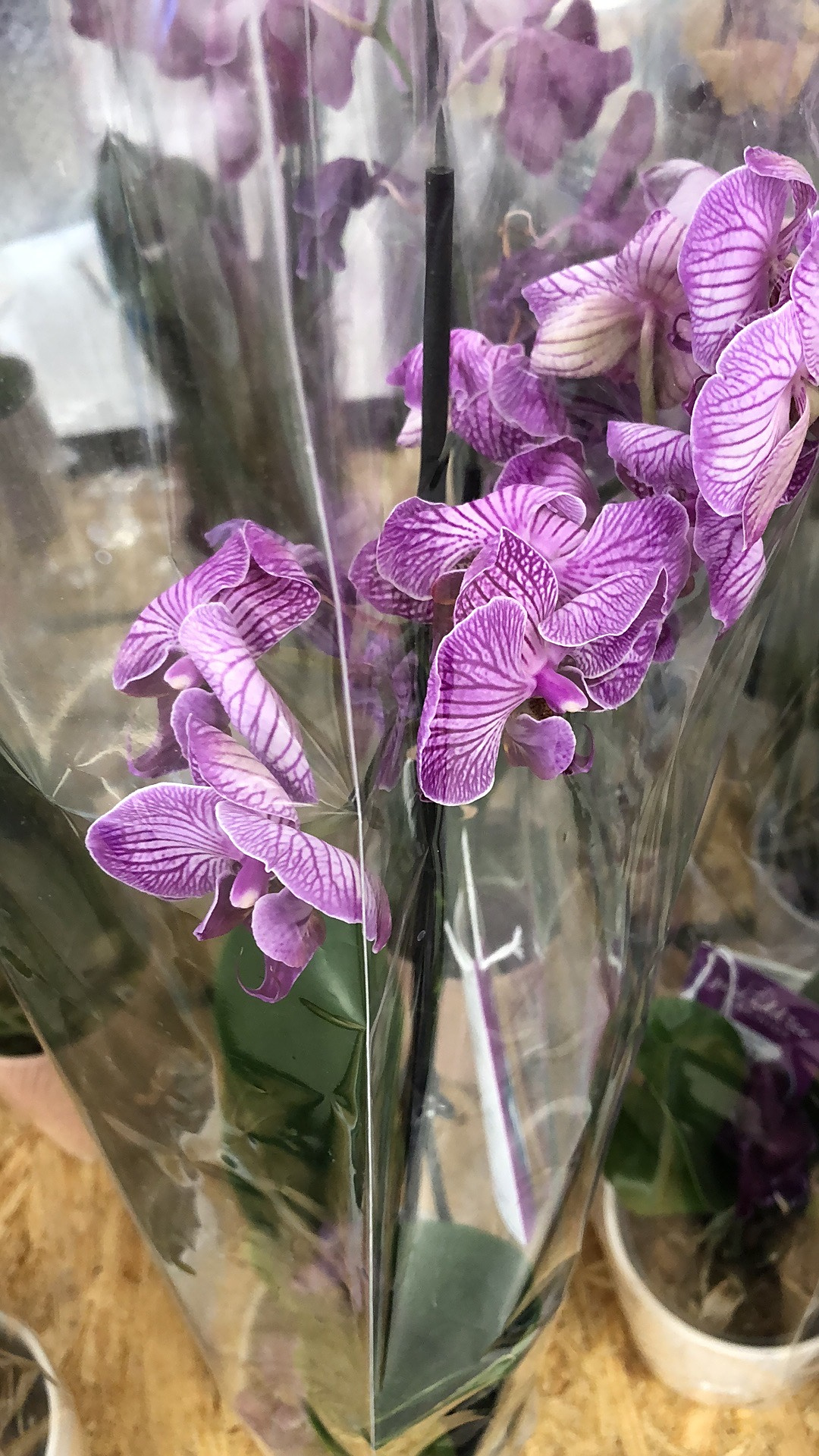
Last Saturday, I braved the torrential downpours and the potholes on the hour-long drive to Madison, MI, where the 2023 Michigan Orchid Society show took place. This was the first time I had entered a plant into an orchid show, and my entry, a pink Phalaenopsis, happened to bloom just in time for this show. It, along with many other orchids of the Ann Arbor Orchid Society, had arrived safely at the show the day prior, thanks to a fellow member offering to transport our plants. I was delighted to see my Phalaenopsis nestled amongst all the other orchids in our display, with a yellow ribbon hanging from its flower spike. My very first entry into an orchid show, with a plant that bloomed unexpectedly, had managed to place in its division!
This particular Phalaenopsis was purchased at a grocery store last year at a significant discount, which was unsurprising given its condition when I found it. With wrinkly leaves and shriveling flowers, it clearly needed some TLC. The label that came with the plant instructed one to water it with ice cubes in lieu of actually watering it normally. Given that orchids typically live in tropical climates, I had some reservations (which I later learned was totally justified), and instead decided to do some research on properly caring for my newly-acquired orchid. After a few weeks, I noticed that it was gradually improving and adjusting to its new home. The flowers that didn’t fall off started perking up, and pretty soon, it even sprouted a new leaf.

How it started
The flowers lasted at least another month before they started dropping, leaving two bare flower spikes. One of them inexplicably started drying up, so it was cut all the way down to the bottom node. The other one stayed green, so I chose to leave most of it intact. I had read that cutting a flower spike just above one of the upper nodes could potentially cause it to produce more flowers, so I wanted to test that theory. Over the next couple of months, my Phalaenopsis, devoid of flowers, sat near the window, the only sign of activity being its growing leaf.

How it’s going
Winter break came and went, and just as I was planning to re-pot and start fertilizing my orchid, I noticed the characteristic “mitten” shape of a new flower spike emerging from the uncut spike! Usually, orchids like Phalaenopsis require a pretty significant temperature drop to trigger flower spike formation. It just so happened, by sheer luck, that my thermostat settings for the winter must have triggered this flower spike. From that day on, I diligently angled the flower spike towards the window, checking on it every day to ensure it was still growing straight. Pretty soon, buds started forming and growing by the week. There were going to be fewer flowers this time, but that was to be expected from a flower spike’s second bloom.
Around mid-March, the first buds started opening practically overnight. Orchid shows were coming up, so the clock was ticking for the rest of the buds to open. About three months after the flower spike first appeared, and just days before the Michigan Orchid Society show, the fourth of five flowers opened. The timing was impeccable. I was pleased to see that all the flowers were all oriented in one direction, as a result of pointing the flower spike directly towards the window. In contrast, the flowers it came with from the store were rather haphazard in appearance, wilting aside.

My Phalaenopsis is what got me hooked on orchids, and since I bought it, I have added many more orchids to my collection. Maybe one day I’ll write about those as well. I’m glad to see that my care has paid off for my Phalaenopsis, and I hope to continue learning how I can provide my orchids with the best care possible.